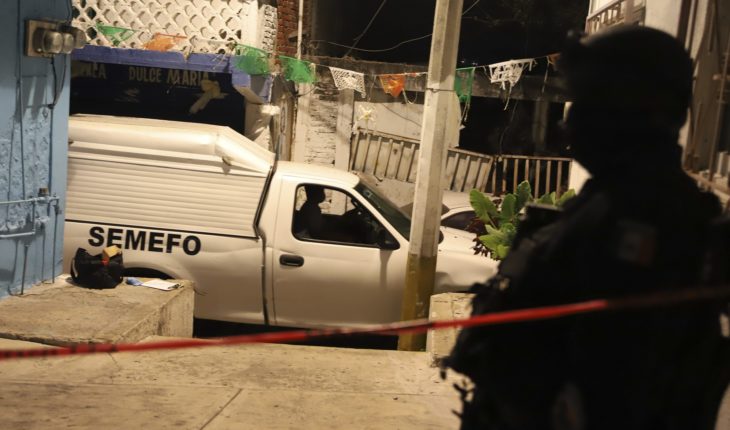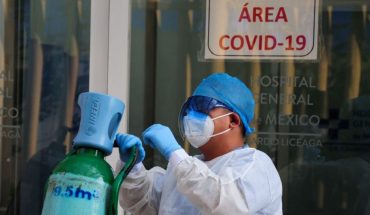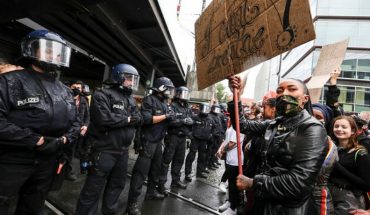In the last decade, no country in the hemisphere has experienced such a large increase as Mexico in the absolute number or in its homicide rate.
This is one of the conclusions of the report “organized Crime and justice in Mexico” of the Justice in Mexico program developed by the University of San Diego, United States, in collaboration with UNAM, the University of Guadalajara, the Autonomous University of Nuevo León, and the Autonomous University of Puebla.
The document, which will be presented in Mexico City on May 30th and 31st, analyses the trends of organized crime and violence that have marked the situation in Mexico, especially since the mandate of Felipe Calderón (2006-2010).
Lee: April, the first month of the AMLO government in which homicides are reduced; Down 3%
“It is clear that the increase in violence in Mexico over the past decade represents an urgent problem that does not need to be exaggerated to deserve serious consideration by academics and policymakers. This tragic loss of Mexican lives should be a cause of serious concern, not hyperbolic claims or part of the political game, “he says.
The increase in violence is related to the so-called “war on Drugs” and marks an upward trend during the presidencies of Calderon and Enrique Peña Nieto (2012-2018), a six-term in which violence has been shot. In total, more than 332.000 people were killed in Mexico since the beginning of the TWENTIETH century, not counting missing persons and crimes that were not reported.
The alert report on the political use that may have certain data. It puts as example a study of 2017 carried out by the International Institute of Strategic Studies suggesting that Mexico was the second most violent country in the world behind Syria, which is living a civil war since 2011.
“Unfounded” claims that, according to this document, were used by US President Donald Trump to “multiply fear and animosity” towards his southern neighbor.
Lee: 4.299 children have been killed in four years; In the first quarter of 2019, three homicides a day
“Homicide levels and rates are actually much worse in other parts of the Western Hemisphere,” says the document, citing the case of Brazil. With a population of more than 200 million people (slightly less than twice the 130 million of Mexico), the South American country is at the head of a total number of homicides for a decade, according to data from UNODC, the UN office dealing with drugs and crime organizations Zado.
For example, in 2015 the homicide rate in Brazil was 26.7 for every 100,000 inhabitants, while Mexico’s was 16.4 for each 100,000. That is to say, according to official data, Mexico was below smaller countries such as Belize, Colombia, Guatemala, Honduras, Jamaica or Venezuela.
“In per capita terms, up to 2015 the number of homicides in Mexico was still something ‘ average ‘ for the Western Hemisphere,” the report says.
One of Mexico’s problems is that, because its population is broader, “the total cost of violence is greater than in smaller countries with higher homicide rates.” One tip: From 2000 to 2015, a total of 256.347 people were killed in Mexico. This figure exceeds the combined total of countries with higher homicide rates such as Guatemala, Honduras, El Salvador, Belize, Jamaica and the Dominican Republic.
The report reflects a strong increase in the number of murders from 2015. In fact, according to data from the Executive secretariat of the National Public Safety system, the homicide rate soared to 27.3 violent deaths per 100,000 inhabitants in 2018 and forecasts for 2019 are in the same direction.
“This means that Mexico’s homicide rate can no longer be considered ‘ average ‘ for the region, but is competing with the latest reported by UNODC for Brazil and Colombia,” the document notes. All this, in the absence of a standard measurement that could be used to equate the figures.
In the opinion of the authors of the report, what differentiates Mexico from other countries in the region is that violence is a relatively new phenomenon. While other states suffered during the TWENTIETH century military interventions and civil wars, in Mexico there is a relative political stability from the thirties of the last century, after the violence that marked the revolutionary period between 1910 and 1917.
Lee also: CDMX records 257 homicides malicious in 1er bimestre of 2019; Record number for this period
Nevertheless, one of the most troubling data is that Mexico is the country in the hemisphere that has seen the most to increase its rates of violence over the past decade.
This increase in the number of murders is directly related to organized crime. However, the report notes a number of changes in trends that are reflected from the document’s name. On previous occasions, the study referred only to violence related to drug trafficking. However, the diversification of criminal structures makes it not possible to speak only of an illicit one, but that the cartels are increasingly fragmented and more and more devoted to illegal businesses.
In geographical terms, the document shows a trend: fewer and less Mexican municipalities with zero homicides. In fact, according to data from 2017, only three out of ten urban nuclei in the country did not record any violent deaths.
According to this report, ten municipalities in Mexico concentrate 33% of the country’s murders. In other words, one in three homicides took place in Tijuana, Juárez, Acapulco, Benito Juárez, Culiacan, Guadalajara, Irapuato, León, Tlaquepaque and.
The Hound: AMLO presumed low in insecurity, but the data deny it
Here we see a change of trend as in the last two years Tijuana has been the city in which more violent deaths have been concentrated, while in the past Acapulco was in the head of the list for four years in a row. The report links this increase in deaths in Baja California due to the outbreak of the new Generation Jalisco cartel, which tries to dispute the drug trafficking routes to the Sinaloa cartel.
Another important point of the report is the state of Guanajuato. According to the document, violence has increased considerably in the cities of Irapuato and León. This would be caused by the huachicoleo and the rise of the cartel of Santa Rosa de Lima.
The main reason that explains the increase in violence in Mexico, according to the report, is the dispute between different cartels by drug trafficking. However, a paradoxical circumstance is given. The document talks about how in the years 70 and 80 of the last century the criminal organizations grew and were even protected by the high levels of corruption.
“With the gradual democratization throughout the decade of 1990, the introduction of political alternation” at different levels of administration, the networks of corruption that had been operating for decades were interrupted, “contributing to increase the competition Among the major drug trafficking organizations. ”
Lee: New record of violence in January: 2928 homicides and 164 victims of kidnapping
This is compounded by the deheading of various organizations, as is the case with the Sinaloa cartel, whose main leader, Joaquín “Chapo” Guzmán, was sentenced to life imprisonment in the United States in February 2019. The arrest of several leaders provoked the fragmentation of the structures, which in turn competed for more and more different illicit businesses, which multiplied the indices of violence.
Another important fact: despite the obvious increase in violence in Mexico, there has been a decline in donations from various agents concerned with reinforcing the rule of law in the country. In other words, even though there are more and more murders, foreign aid has decreased.
The report finally raises the difficulties that President Andrés Manuel López Obrador will face in his task of pacifying the country. Alert on criticism from civil society organizations to initiatives such as the National Guard but applauds that, for the first time, the Mexican president focuses on the socioeconomic roots that explain the violence, with a special mention of the plan “young Building the future. ”
As recommendations, the report proposes that initiatives aimed at strengthening Mexican institutions should be better analyzed in order not to fall into duplication and be more efficient, to reinforce both the police and the procedures for prosecution (not By merely pursuing drug trafficking, but by broadening the focus on corruption and money-laundering structures, develop special measures to tackle political violence and reinforce anti-corruption strategies.
Here you can see the full report.
Thank you for reading! Help us get on with our work. How? Now you can subscribe to the political Animal on Facebook. With your monthly donation you will receive special content. Find out how to subscribe here. Check out our list of frequently asked questions here.





